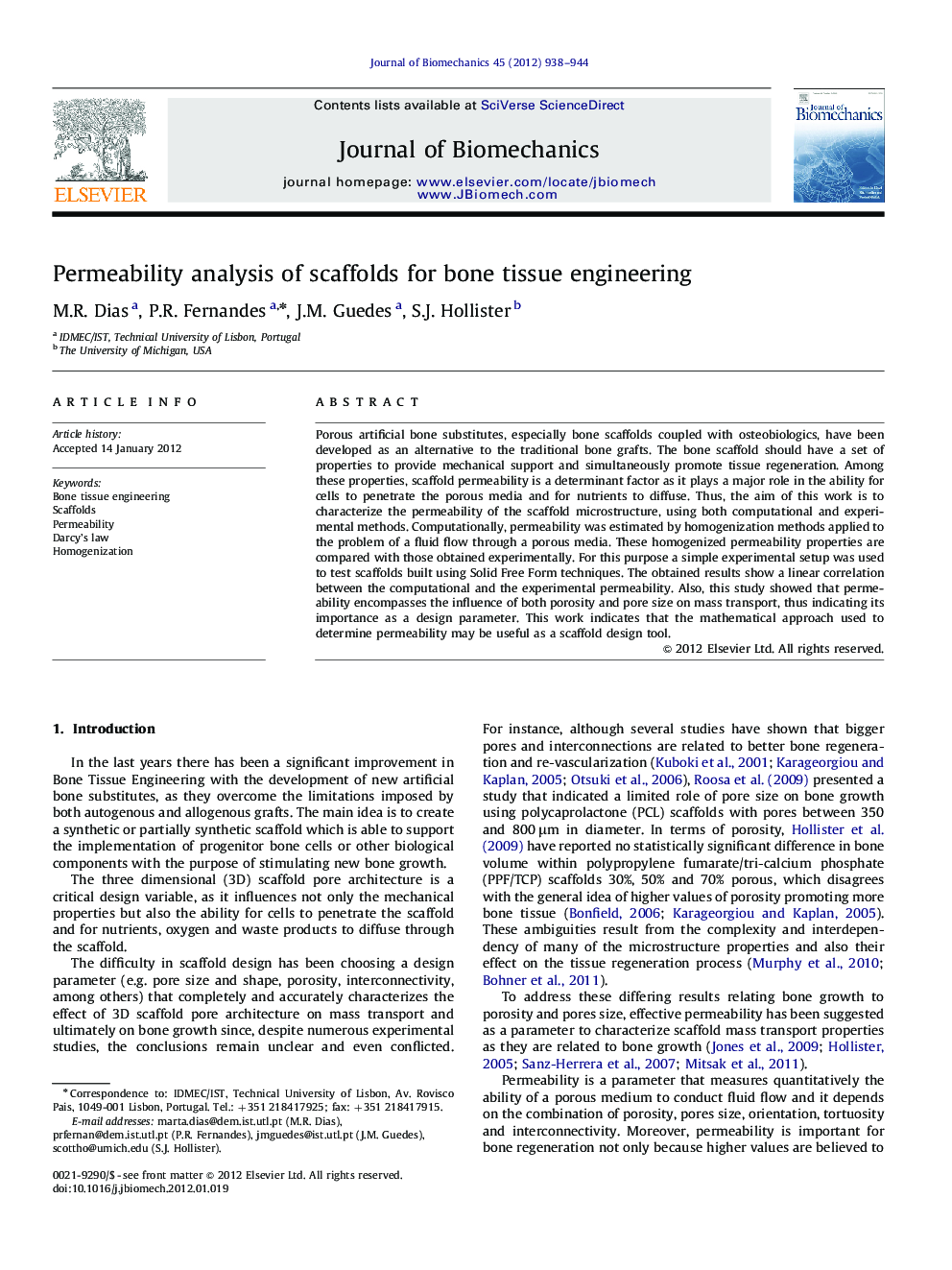| Article ID | Journal | Published Year | Pages | File Type |
|---|---|---|---|---|
| 10433145 | Journal of Biomechanics | 2012 | 7 Pages |
Abstract
Porous artificial bone substitutes, especially bone scaffolds coupled with osteobiologics, have been developed as an alternative to the traditional bone grafts. The bone scaffold should have a set of properties to provide mechanical support and simultaneously promote tissue regeneration. Among these properties, scaffold permeability is a determinant factor as it plays a major role in the ability for cells to penetrate the porous media and for nutrients to diffuse. Thus, the aim of this work is to characterize the permeability of the scaffold microstructure, using both computational and experimental methods. Computationally, permeability was estimated by homogenization methods applied to the problem of a fluid flow through a porous media. These homogenized permeability properties are compared with those obtained experimentally. For this purpose a simple experimental setup was used to test scaffolds built using Solid Free Form techniques. The obtained results show a linear correlation between the computational and the experimental permeability. Also, this study showed that permeability encompasses the influence of both porosity and pore size on mass transport, thus indicating its importance as a design parameter. This work indicates that the mathematical approach used to determine permeability may be useful as a scaffold design tool.
Related Topics
Physical Sciences and Engineering
Engineering
Biomedical Engineering
Authors
M.R. Dias, P.R. Fernandes, J.M. Guedes, S.J. Hollister,
